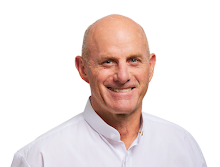I recently read Metabolical: The Lure and Lies of Processed Food, Nutrition, and Modern Medicine by Robert Lustig (2020).
In this book RL relies on his 40+ years as a physician-researcher (many of which were dedicated purely to treating obese children) to indict the Big Pharma, Big Agriculture, Big Medicine, Big Nutrition and Big Food for their complicity in fomenting a health crisis of monumental proportions in the United States. And of course, the scam of foodlike substances is supported, and often underwritten, by Big Guvmint. My top takeaways:
· RL’s live well and long rule: “Protect the liver, feed the gut.”
· Only by shifting to eating healthy food can we arrest chronic disease and early death.
· It’s food quality, not quantity, that matters.
· Not all calories are alike.
· Modern medicine focuses on treating the symptoms, not on reversing the diseases.
· At the current rate, computer modeling indicates that ½ of all Americans will be obese by 2030.
· Prescription medications are the third most common cause of death today.
· Medical schools teach treatment of disease, very little prevention, and virtually NO nutrition to physicians in training.
· Shop the edges of the supermarket, not the aisles (where most of the processed food resides).
My favorite quotes:
“Physical activity is a useful adjunct, but you can’t outrun a bad diet.” (p. 8)
“The good news is that for chronic disease, genetics only explains about 15 percent of the variance in risk. The other 85 percent is environmental, which means there’s plenty you can do to mitigate your risk for diabetes, cancer, heart disease, dementia, and virtually every other chronic disease.” (p. 139)
“People think supplements are the antidote for bad food. They’re not. Rather, Real Food is the treatment, while bad food is the poison.” (p. 151)
“Whether you like it or not, you’re eating for two—you’re in a symbiotic relationship with your gut, and if you hurt your gut, your gut will hurt you back.” (p. 170)
“This process of purification turns sugar from food into drug…The minute the dose exceeds the liver’s capacity to clear and metabolize it, it’s in the brain, driving reward in all people, and addiction in some. And it’s being added by Big Food to 74 percent of the food supply, because when they add it, we buy more.” (p. 285)
This book confirms much of what Moe and I have learned about nutrition (and our own health) over the last 10 years. RL has done a masterful job of pulling it all together and making it understandable those of us who are not physicians and/or researchers.
If you’re gonna read only one book this year related to your own health and wellbeing, read this one.


